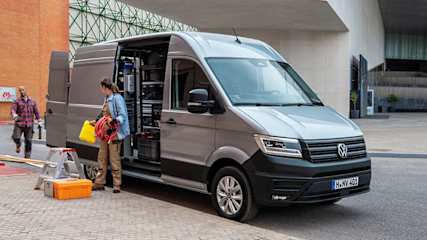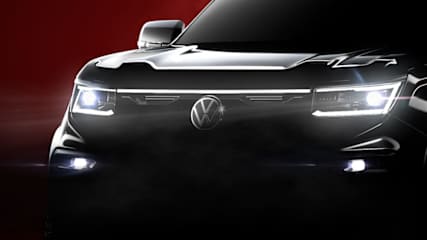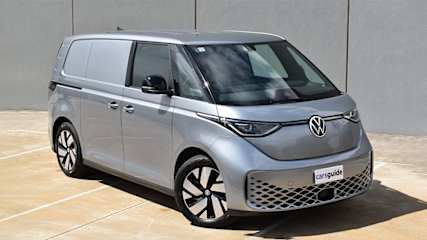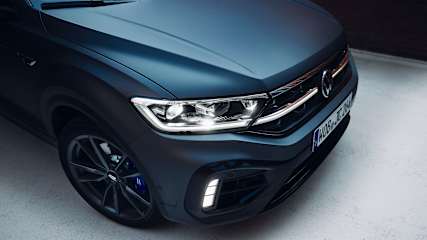Top five used 4x4 alternatives in 2025: from the Subaru Forester to the Toyota RAV4 hybrid and more
By Marcus Craft · 29 Mar 2025
Many people want a four-wheel drive (4WD) because they think only a vehicle with high- and low-range 4WD gearing, plenty of ground clearance, locking diffs, and gnarly Mud Terrain tyres will get them to where they want to go.Well, for some that is correct but for most others, the truth is an all-wheel drive (AWD) is more than enough to get them where they want to go.AWDs should be driven well within their limits and my advice for soft-roader drivers is to avoid anything beyond well-maintained dirt tracks in dry weather; do not drive your AWD vehicle on any tracks that are signposted ‘4WD/high ground clearance only’; do not undertake any prolonged driving on sand, especially soft sand; and definitely no rock-crawling.AWDs aren't anywhere near as capable or as versatile in an off-road scenario as 4WDs, but getting the right all-terrain tyres, dropping tyre pressures and using steady momentum will help soft-roader drivers get through most light-duty off-roading without too much stress and/or vehicle damage.Here’s out top five used alternatives to 4WDs. (Note: We’re focusing on all-round driveability, packability (boot space etc) and whether the vehicle is fit for purpose (practicality).VW’s T6.1 California Beach camper van offers a happy compromise for those who want some outdoors adventure, but don’t want to crawl into a tent or tow a caravan while away on holiday.This retro-cool campervan, based on VW’s mid-size Transporter van and, at the time, a refreshed version of a classic, represents a low-key way to start your own van-based adventure lifestyle. An optional two-tone paint job can add to its cool factor.It seats five (two at the front, and three on the rear bench seat), and can sleep up to four.It has a 2.0-litre four-cylinder turbo-diesel engine (producing 110kW at 3250-3750rpm and 340Nm at 1500-3000rpm), a seven-speed dual-clutch auto (or DSG, direct shift gearbox) and VW’s 4Motion all-wheel-drive system.It has a stack of touring-friendly accessories, such as 180-degree swivel seats up front, an electric pop-top roof, a fully sprung loft bed (1200mm x 2000mm) with comfortable-sprung base and mattress, bed extension for rear bench seat with comfort sleeping mattress, camping table and two folding chairs, camper control unit with touchscreen, pull-out awning with housing and rail in black or silver.The California’s interior is nice and comfortable – a blend of life-friendly hard plastic and soft-touch surfaces – with a solid build quality to it all, as well as superior fit and finish.It’s a well-behaved and smooth-driving vehicle, the turbo-diesel engine and seven-speed dual-clutch auto work well together. It’s an even-handed pairing that gives this camper a bit of welcome pep about it and generally makes for an unfussed drive.You do have the option in this of taking on tracks a bit tougher than bitumen or rough back-country roads because it has VW’s 4Motion all-wheel-drive system. And, remember, the $1600 (at the time) off-road package adds a mechanical rear differential lock and hill descent control – but none of that means you should attempt hardcore rock-crawling in your California.It has 213mm ground clearance, so this camper is not built for anything other than light-duty off-roading, i.e. well-maintained gravel or dirt roads with few, if any, corrugations, and in dry weather only.The California has towing capacities of 750kg (unbraked) and 2500kg (braked). GVM (gross vehicle mass) is a claimed 3080kg.Fuel consumption is a claimed 7.5L/100km on a combined cycle. Actual fuel consumption on this test was 9.9L/100km.It has an 80-litre fuel tank so going by that on-test fuel figure you could expect to get a driving range of about 808km from a full tank. It also has a 13-litre AdBlue tank.The California Beach is more than fit for purpose – it’s functional, it's comfortable and it's nice to drive – and may be an ideal introduction to the adventure lifestyle for some.We’ve heard of transmission problems, oil leaks, and even some people having issues with this camper’s awning, but those are hearsay only.As always with a used vehicle, check for underbody damage, rust, sand or salt spray residue that may be evidence the California has indeed been driven near or on beach or coastal river sand.Expect to pay around the $105,000 mark. Pricey, yes, but many would say that it’s well worth the money.This seven-seat AWD plug-in hybrid (PHEV) wagon is a proven city- and family-friendly mid-sized SUV with reasonable capabilities as a light-duty off-road tourer.The Outlander PHEV has a 2.4-litre four-cylinder petrol engine (delivering 185kW and 450Nm), an electric motor on the front and rear axles, and a lithium-ion battery pack with a total capacity of 20kWh.The PHEV’s EV-only driving range increased from 54km in the previous-gen Outlander to 84km in the 2023 line-up.It has a single-speed transmission and drive modes in this vehicle include Eco, Normal, Power, Tarmac, Gravel, Snow and Mud.It has three power-use modes: EV Mode (“perfect for low to medium speeds in urban areas”, according to Mitsubishi), Series Hybrid Mode (“When accelerating or climbing hills, the hybrid petrol engine can be used to generate additional power while the vehicle runs on motor power”), and Parallel Hybrid Mode (“For high-speed driving such as overtaking vehicles on the highway, the vehicle runs on engine power while being assisted by the electric motor”).This Exceed variant has a neat and functional interior with a premium feel about it with comfortable leather seats, soft-touch surfaces, and an easy-to-use multimedia system.The seats are comfortable with adequate room for everyone, though the third row is a bit squeezy.The second row is a 40:20:40 split configuration, while the third row is 50:50.In terms of packing space, there is a 163-litre boot (when all seats are up and in use), 478 litres when the third row is folded down flat, and 1473 litres of useable space when the second and third rows are stowed away.This Outlander is an easy vehicle to manoeuvre around city and suburban streets and even on tight bush tracks.The pairing of a 2.4-litre four-cylinder petrol engine and two electric motors works seamlessly well, it has plenty of power and it’s always very smooth and quiet.The Outlander has 203mm of ground clearance (unladen), but it does feel nimble in the bush (steering is sharp), visibility is good all-round, and it settles well on gravel and dirt tracks at speed, only ever skipping around a bit on rougher sections, due to firm suspension and road tyres.You can switch drive modes to either Gravel, Snow or Mud to best suit the terrain, but, really, with the Outlander’s lack of ground clearance, and its road-biased tyres and 20-inch wheels, this SUV is ultimately more comfortable on well-maintained dirt roads and should not go anywhere near tracks with deeps ruts or mudholes.This is, however, still a handy dirt-road tourer, yielding comfortable and controlled ride and handling, as well as an overall refined driving experience, only ever becoming a bit too rattled when the road or track surface becomes lumpy and bumpy.This PHEV has a listed fuel consumption of 1.5L/100km on a combined cycle, but you have to be very lucky to get anywhere near that figure.Having said that, if your daily driving distances are within this PHEV’s official electric driving range (84km) and you’re able to drive in EV Mode most of the time, then at the very least you will have slashed your fuel costs.The actual fuel consumption on our most recent test in this vehicle was 9.9L/100km. Dash-indicated fuel consumption was 6.1L/100km.Our dash-indicated power usage was 19.2kWh/100km. This PHEV seemed to chow through most of its onboard battery power quite swiftly on our drive home, without recouping much via regenerative braking on long downhills, even when we tried cycling through the regen modes in an attempt to optimise power regain.This Outlander has 20.0kWh battery capacity and a 56L fuel tank.Mitsubishi reckons that if you’re charging off a standard household power point it will take “approximately” 9.5 hours to fully charge your Outlander – or 6.5 hours if you’re using a home or public charging device.Things speed up considerably if you use a public rapid recharging station – in that case, Mitsubishi claims that your Outlander Plug-in Hybrid EV will reach 80 per cent capacity in 38 minutes.Towing capacity is 750kg (unbraked) and 1600kg (braked).This Outlander is nice to drive, quiet, refined and comfortable. Bonus: it is a suitably capable all-wheel-drive tourer.We’ve been told some people have experienced complete battery failure or charging malfunctions and some owners aren’t happy with the firm ride on 20-inch rims but we’ve not seen first-hand any of those problems.As always with a used vehicle, check for underbody damage, rust, sand or salt spray residue that may be evidence the Outlander has been driven near or on beach or coastal river sand.Expect to pay around $64,990.Be aware, there’s going to be one or two Subies on this list.Subaru is well regarded for its effective all-wheel-drive wagons and this Forester maintains that tradition.It has a 2.5-litre four-cylinder petrol Boxer engine – producing 136kW at 5800rpm and 239Nm at 4400rpm – with a seven-speed CVT auto and Subaru's symmetrical all-wheel-drive system with two-mode X-Mode.This top-shelf Forester has a well designed interior with a neat fit and finish and leather everywhere. There are durable surfaces and material elsewhere and so it feels like an interior a family can easily do long road trips in.The interior is comfortable with power-adjustable seats up front and, as mentioned, it’s a family-friendly space. There’s ample legroom all-round, and the roofline is not tapered downwards towards the back end as sharply as it is in some Forester rivals, so there's plenty of headroom in the second row.The Boxer engine and CVT work well together, but manual is still the preferred mode for Forester driving. Paddle shifters on the steering wheel are handy if you want to get lively with your driving.The Forester’s AWD system – a 60/40 torque-slit – comes into its own on bumpy dirt tracks and choppy corrugated gravel roads, but even moreso when this Subie is driven at lower speeds and when the surface of the road or track becomes a little bit looser. Let’s put it this way: the Forester is perfectly fine for low-speed, low-traction scenarios as long as it’s driven safely and sensibly.The X-Mode system here has two modes – Snow/Dirt and Deep Snow/Mud – which each yield improved grip and traction in low-speed and slippery conditions, by way of adjusting throttle control (deadening its sensitivity so the driver has improved input) and traction control (cutting in faster to avoid wheelspin) and gear selection to suit the terrain you’re on.There is 220mm of ground clearance, on par with some supposedly more serious off-roaders, and, driven with consideration, the Forester can tackle most low-intensity off-roading without strife.With regards to suitability for packing for camping and touring, there is 498 litres of space with the second-row seat in use, and 1768 litres of space with those seats folded down flat.This Forester has a claimed fuel consumption of 7.4L/100km (combined). We recorded 8.4L/100km during our time with it and that included 40km of gravel-road driving.It has a 63-litre fuel tank, so going by that on-test fuel figure you could reasonably expect to get a driving range of about 750km from a full tank.It has max towing capacities of 750kg (unbraked) and 1500kg (braked) with a maximum lowball download of 150kg.This comfortable and capable Forester is supremely well-built for purpose, if your purpose is to go on low-intensity weekend adventures and tackle light-duty off-roading, mostly on well-maintained gravel and dirt roads.CVT problems – sluggish shifts, noise – have been informally reported to us, but those seem to have been ironed out in recent years.As always with any used AWD/4WD/or even a 2WD, check for underbody damage, rust, sand or salt spray residue that may be evidence the vehicle in question has indeed been driven near or on beach or coastal river sand.Expect to pay between $24,400 and $30,400.https://www.carsguide.com.au/ev/toyota-rav4-hybrid-2020-review-cruiser-awd-off-road-test-76539 This RAV4 is the second-from-top spec in the fifth-generation RAV4’s range and handy example of a hybrid application executed well.It has a 2.5-litre four-cylinder petrol engine (131kW and 221Nm), an electric motor on the front axle (88kW/202Nm) and an electric motor on the rear axle (40kW/121Nm).Total combined power is listed as 163kW. No combined torque figure is listed.In basic terms, the petrol engine drives the front wheels, the front electric motor helps out with overall efficiency and the electric motor at the back kicks in on that rear axle to give the RAV4 an extra boost when needed.All hybrid grades have an auto/e-CVT as standard.This RAV4 has several driving modes including Eco, Normal and Sport, all geared at producing ride and handling via optimised engine performance and tuning, steering and throttle response, best suited to the selected mode and the terrain and conditions.There’s an EV mode – for driving only on battery power at low speed and for short distances – and and Trail mode, which taps into that rear motor to provide rear-axle power, sending up to 80 per cent of total drive torque to the rear wheels.Passenger space is good and boot space is 580 litres, so there’s heaps of room.This RAV4’s ground clearance is listed as 190mm and while that might seem low to a seasoned four-wheel driver, it's enough for this vehicle to tackle the dry, well-maintained dirt roads and bush tracks with no deep ruts it has been engineered for.Official fuel consumption is listed as 4.8L/100km (combined), but our actual fuel consumption on the test was 5.9L/100km. The RAV4 has a 55-litre fuel tank, so going by that on-test fuel figure you could reasonably expect to get a driving range of about 932km from a full tank.This RAV4 hybrid AWD has a 750kg unbraked towing capacity and 1500kg braked towing capacity, so decent enough for an SUV this size.Most importantly and most impressively, this RAV4 hybrid has no problem getting torque to the ground on any surface because the combination of petrol engine, electric motors and CVT is so effective it always seems to find the sweet spot.Stop-start temporarily doesn’t work – i.e. car keeps running at lights. Battery is likely low and the car is overriding stop-start to keep onboard systems operating.As always, check for underbody damage, rust, sand or salt spray residue that may be evidence that the RAV4 has been driven on beach or coastal river sand.Expect to pay between $38,490 to $51,777.Subarus have a rock-solid rep as handy all-wheel drives and great all-rounders – and this sixth-generation Outback is one of the best.The new (at the time) Outback has a 2.5-litre four-cylinder horizontally-opposed Boxer petrol engine – producing 138kW at 5800rpm and 245Nm at 3400-4600rpm – and that’s mated to a continuously variable transmission (CVT).It has permanent all-wheel drive and Subaru’s X-Mode system that includes Normal, Snow/Dirt and Deep Snow/Mud modes. These driving modes adjust engine torque, throttle response and traction control, among other things, to suit the conditions.Towing capacity for the Outback range is 750kg for an unbraked trailer and 2000kg for a braked trailer, with a towball download of 200kg.Ground clearance is listed as 213mm but that’s enough for the dry, well-maintained dirt roads and bush tracks with no deep ruts this AWD is designed for.Official fuel consumption figure is listed as 7.3L/100km on a combined cycle). On our most recent test in this vehicle we recorded 8.8L/100km.It has a 63-litre fuel tank, so going by that on-test fuel figure you could reasonably expect to get a driving range of about 715km from a full tank.This Outback is nice to drive, impressive value (see below), practical, and roomy, with 522 litres (VDA) of rear cargo capacity, and 1267L when you fold the seats flat.As stated in the CarsGuide Problems section, there have been anecdotal experiences reported of some reliability issues with Subaru CVTs in the past, but in the case of the Outback, that appears to mainly affect vehicles built between 2010 and 2015.Chances are the Outback may not have been used for any off-roading beyond the parking area grass near a soccer field but, just in case, when checking out the vehicle in person, make sure you look under the vehicle to check if it hasn’t copped any serious knocks, bumps or scuffs to the undercarriage or side steps – that may be an indication of other more serious damage that is not visible. Check for rust, sand or salt spray residue that may be evidence of driving on beach or coastal river sand.Expect to pay between $26,900 to $37,900.




.jpg)
.jpg)
.jpg)


.jpg)